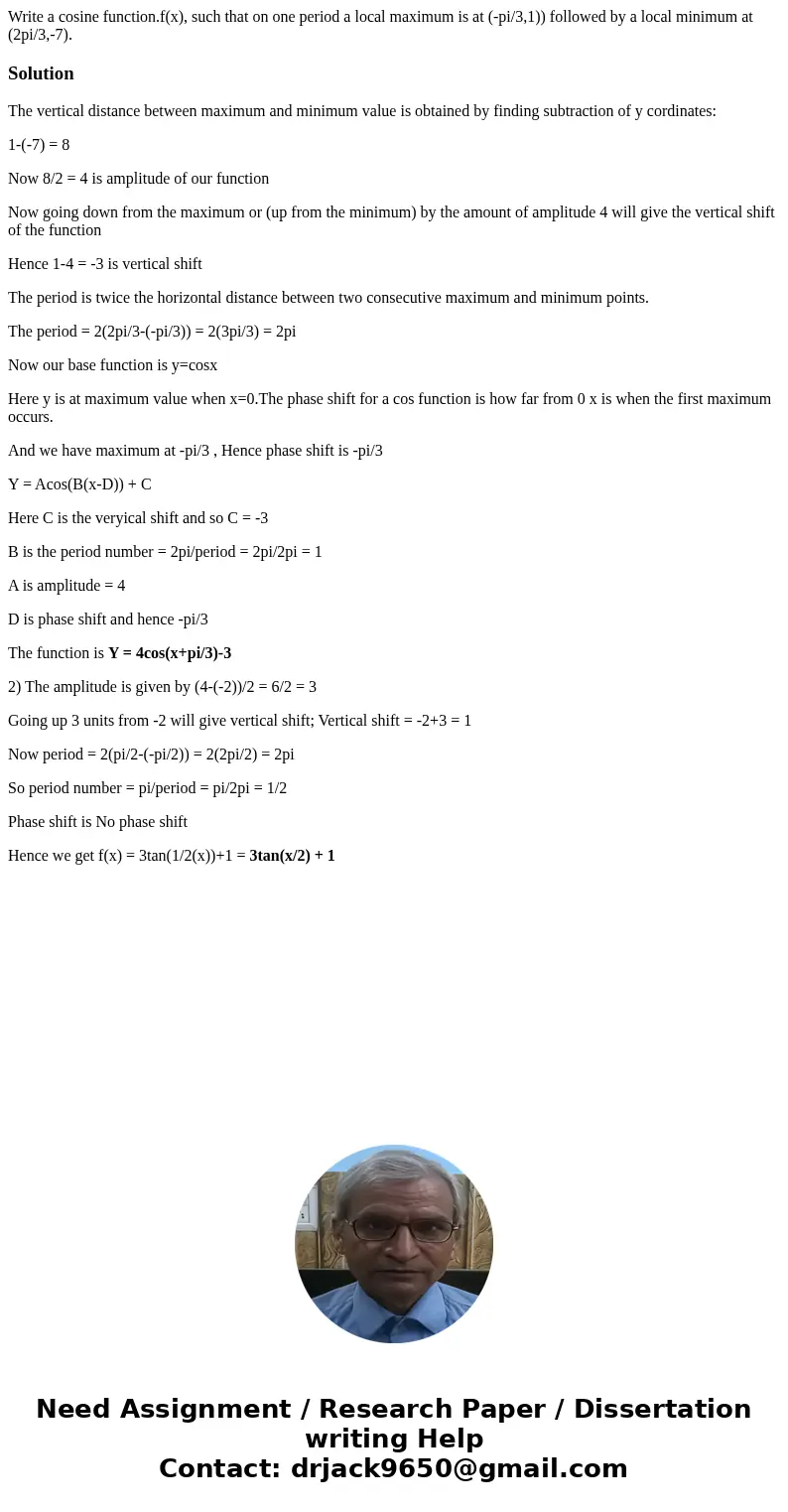Write a cosine functionfx such that on one period a local ma
Solution
The vertical distance between maximum and minimum value is obtained by finding subtraction of y cordinates:
1-(-7) = 8
Now 8/2 = 4 is amplitude of our function
Now going down from the maximum or (up from the minimum) by the amount of amplitude 4 will give the vertical shift of the function
Hence 1-4 = -3 is vertical shift
The period is twice the horizontal distance between two consecutive maximum and minimum points.
The period = 2(2pi/3-(-pi/3)) = 2(3pi/3) = 2pi
Now our base function is y=cosx
Here y is at maximum value when x=0.The phase shift for a cos function is how far from 0 x is when the first maximum occurs.
And we have maximum at -pi/3 , Hence phase shift is -pi/3
Y = Acos(B(x-D)) + C
Here C is the veryical shift and so C = -3
B is the period number = 2pi/period = 2pi/2pi = 1
A is amplitude = 4
D is phase shift and hence -pi/3
The function is Y = 4cos(x+pi/3)-3
2) The amplitude is given by (4-(-2))/2 = 6/2 = 3
Going up 3 units from -2 will give vertical shift; Vertical shift = -2+3 = 1
Now period = 2(pi/2-(-pi/2)) = 2(2pi/2) = 2pi
So period number = pi/period = pi/2pi = 1/2
Phase shift is No phase shift
Hence we get f(x) = 3tan(1/2(x))+1 = 3tan(x/2) + 1

 Homework Sourse
Homework Sourse